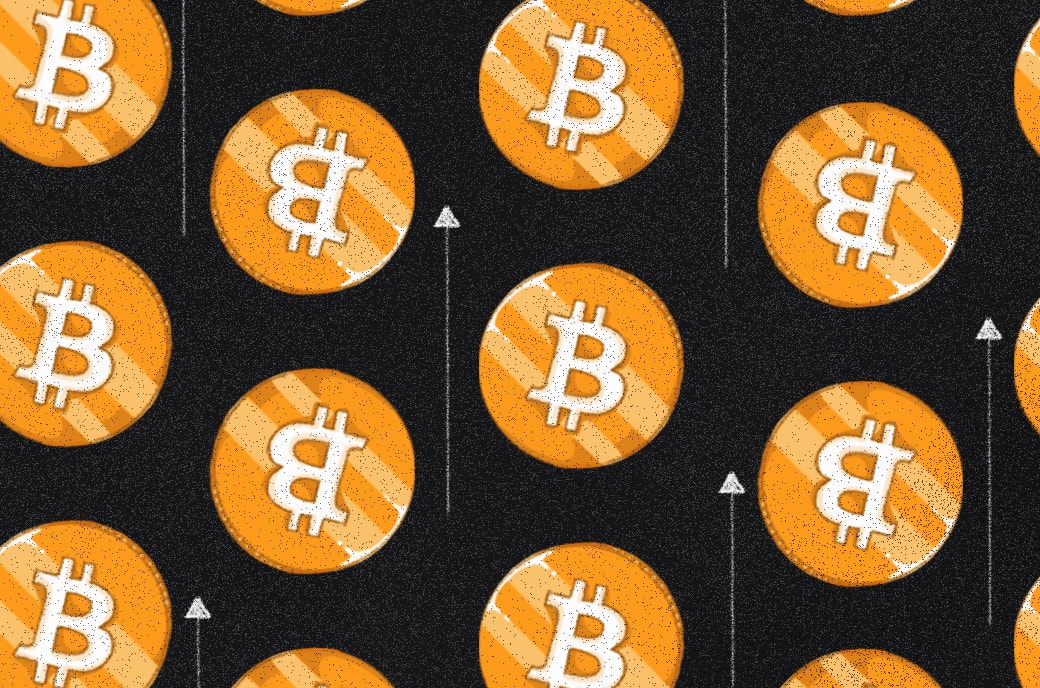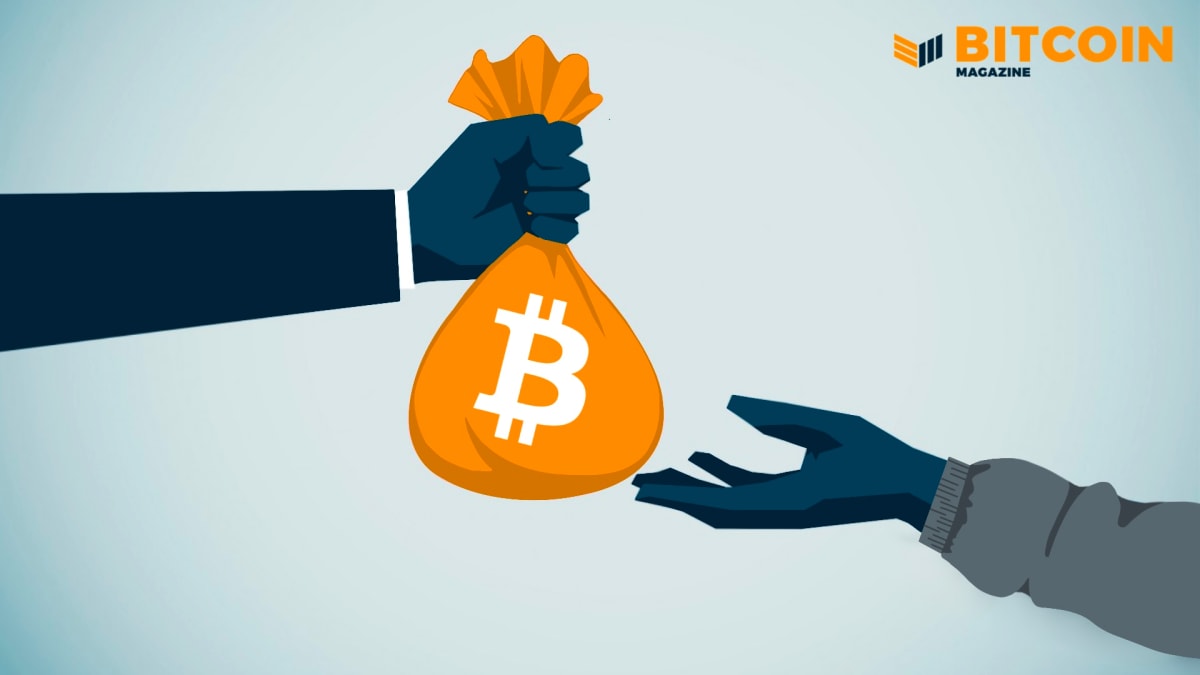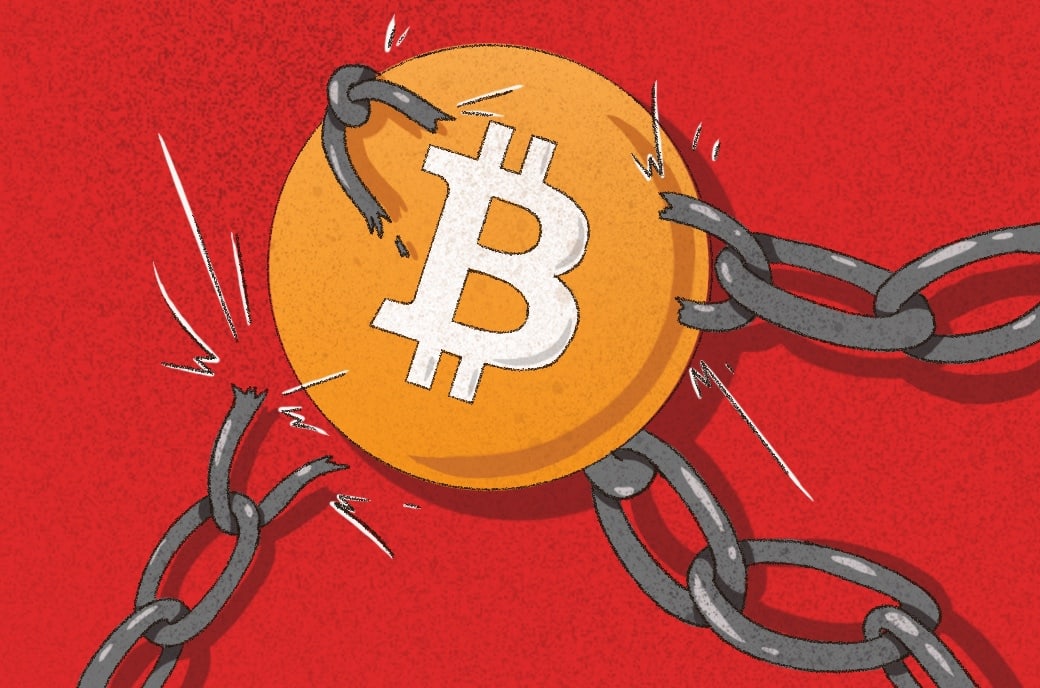The Rise Of Ordinals And NFTs On The Medium Of Bitcoin
The Ordinals protocol was introduced to Bitcoin in early 2023 at a most opportune time. Bitcoin had nearly two years of low transaction fees from the lack of demand to actually send Bitcoin transactions. Bitcoin is considered to be the most secure blockchain in the world, but that security depends on miners who receive their revenue from transaction fees and block rewards. As part of the predetermined supply schedule, the block rewards are expected to be halved around April 2024 which would further drastically cut the miner revenue. To support the miners, Bitcoin needed something new to spur growth, and that was Ordinals. Ordinals drove huge demand to send Bitcoin transactions. Over $100 million (USD) worth of transaction fees have been spent so far this year just to create inscriptions, one type of transaction attributed to Ordinals.

Ordinals is a protocol built on top of Bitcoin that allows Bitcoin to secure and transact other fungible and non-fungible tokens (NFT). Bitcoin is the oldest blockchain and similar protocols (“Bitcoin 2.0”) actually existed years earlier. Mastercoin (later renamed OMNI), colored coins, and Counterparty are all protocols that enabled other digital assets on Bitcoin, and had sizable markets for their time. However smart contract-based blockchains like Ethereum took over this market in recent years. Now at the end of 2023, Ordinals is starting to capture some of this market back on Bitcoin.
In the last couple of years, NFTs have been advancing and evolving on other blockchains. In 2017, the original 10,000 digital art character collection (i.e. profile picture or PFP collection), CryptoPunks was launched on Ethereum. Then in 2018, the Non-Fungible Token (NFT) Standard, ERC-721 was introduced on Ethereum. An explosion of NFTs followed the standardization of NFTs on Ethereum, and the NFT markets on other blockchains also grew because of this standard.
The ERC-721 NFT standard is a digital certificate model. The NFT is a certificate, a unique identifier for some item. The actual item can be anything and does not need to be stored on the blockchain. The NFT enables the trade of these certificates on the blockchain. For example, if the NFT is a certificate for an art piece, the art itself is typically stored off-chain, either on IPFS (a distributed file system) or a third party data storage provider.
Blockchain As A Medium, The On-Chain NFT
As NFT technology advanced, a class of NFTs developed where the digital item referenced by the NFT could also be stored directly on the blockchain. Although this type of on-chain NFT was more difficult and more costly to create, it had advantages that off-chain NFTs did not, such as security and longevity. For art, on-chain NFTs actually use the medium of the blockchain as the medium of the art, as the art is created on the blockchain itself. Art Blocks built an entire infrastructure on Ethereum to support this new type of on-chain art, or Crypto Art. Creating on-chain art requires new skills and blockchain expertise to master, so up until the beginning of 2023, only a small percentage of NFTs were on-chain, and Crypto Art that used the blockchain as the medium had been little explored.

The choice of the medium for an art piece is one of the most important aspects of the art. The artist tells the story through the medium. Each medium has its own expressive constraints and requires specific skills to master. The artist’s legacy is preserved in the medium, so the permanence of the medium is very important. The sculptures of Michelangelo have lived on for hundreds of years after his death. The famous cave paintings of Lascaux continue to amaze people after over 10,000 years! In today’s digital world, we have a new medium for digital art in the form of the blockchain. The Bitcoin blockchain offers many unique expressive constraints, and in terms of permanence, it may be the most permanent digital medium in the world.
Bitcoin As A Medium For NFTs
Even before ERC-721, NFTs have existed on Bitcoin for years (such as Spells of Genesis and Rare Pepes trading cards). The Bitcoin NFT market was later dwarfed by the NFT markets on other blockchains like Ethereum and Solana. Now in 2023, because of Ordinals, the Bitcoin NFT market is rapidly catching up to the top NFT markets on all the other blockchains. NFTs using Ordinals differentiate from almost all other NFTs because the Ordinals protocol treats Bitcoin as a medium for the NFT, as opposed to the usual certificate model for NFTs. Ordinals was launched at a time when the overall NFT market had matured enough to understand this new type of on-chain NFT that used the blockchain as a medium.
The Ordinals Protocol Enables Digital Artifacts On Bitcoin
We care even more about using Bitcoin as a medium for NFTs because Bitcoin is the oldest, most decentralized, most secure, and highest value blockchain. NFTs on Bitcoin using Ordinals inherit Bitcoin’s impressive security properties, using the same ledger as Bitcoin to record ownership. The Ordinal NFT is permissionless, uncensorable, immutable, and complete. Permissionless means that we have the right to transfer the NFT to whoever we want without needing anyone else’s permission. Uncensorable means that no other party can censor our NFT. Immutable means that the NFT cannot be altered. And complete means that the NFT is complete on the medium it was created on, Bitcoin (i.e. on-chain). The NFT that satisfies all these properties is a Digital Artifact.
The Ordinal Protocol
The Ordinal Protocol can be boiled down to three definitions, the satoshi (sat), the inscription, and the mapping of ownership for the inscription.
- Satoshi (sat). The satoshi is the smallest unit of bitcoin. The Ordinal Protocol defines a unique number to identify every satoshi in Bitcoin, and allows each unique satoshi to be tracked through every Bitcoin transaction. Ownership of a satoshi is determined by the Bitcoin ledger.
- Inscription. The Ordinal Protocol defines a way that data can be written on-chain on the Bitcoin blockchain. The data asset is called an Inscription.
- Mapping of ownership. The Ordinal Protocol maps the ownership of an Inscription to a unique satoshi. Whoever owns the satoshi also owns the Inscription.
The Importance Of Community For Ordinals
The Bitcoin protocol was a revolutionary technical achievement, but it would not have succeeded without the community that grew around it. Ordinals is a similarly elegant protocol for digital assets using the medium of Bitcoin, and it is being adopted by a community. Galaxy Digital reports that the total trading volume of Ordinals for the first 8 months of 2023 was $596.4 million (USD), and projects that the Ordinals market would reach a $5 billion (USD) market capitalization by 2025. In 2013, I started building a community for Bitcoin, started the Stanford Bitcoin Meetup, and witnessed the growth of Bitcoin’s strong developer community. In recent years, Ethereum and other blockchains have been more successful at building their communities. Now in 2023, we’re seeing a reinvigoration of the Bitcoin developer community. Ordinals is the main driver as NFT communities and developers are again excited to be building on Bitcoin.

OnChainMonkey (OCM) is an NFT community originally launched in 2021 on Ethereum, and now migrating to Bitcoin. The OCM community is aligned around the core values of !RISE – Respect, Integrity, Sustainability, and Enrichment. On-Chain is important to OCM because these are the digital assets that are best secured by the blockchain. So in early 2023, when Ordinals emerged, the move to this new protocol for on-chain assets on Bitcoin made sense. Few in the market agreed with us then, but we were confident in our move. Our team has the unique experience of both building on Bitcoin since 2013 and building NFTs and digital artifacts in recent years. We understood that Bitcoin fees will be and need to be higher in the future. We worked on growing both the OCM community and the Ordinals community. We focused on explaining why Ordinals matters, and showing how to best use the medium of Bitcoin with techniques like Recursive Inscriptions, Parent-Child Provenance, and Reinscription, all of which we’ll cover below, along with the migration (upgrade!) of OCM from Ethereum to Bitcoin.
2 year anniversary video: https://twitter.com/OnChainMonkey/status/1701251213767983299
The Innovative Creation Of OCM Genesis
OCM launched as art on the medium of Ethereum in 2021. I wrote about the creation of OCM (now known as OCM Genesis) in “The Making of OnChain Monkey.” The OCM art is a juxtaposition of a simple distinctive design with a complex on-chain transaction. All 10,000 unique monkeys were created on-chain in a single Ethereum transaction. The single transaction was an important part of the OCM art. 10,000 unique monkeys, with a distribution of traits and meta-traits designed with rich and interesting combinations to fascinate collectors, were all birthed in one atomic self-contained and complete transaction. The beauty of this art was also how it used the shared public blockchain in a sustainable and efficient manner that was respectful of everyone else using Ethereum. OCM had an extremely low blockchain footprint, with the whole 10k PFP image collection created on-chain in a single transaction. That had never been done before, and that would matter two years later when we launched on Bitcoin Ordinals.
The 10k Digital Artifact On Bitcoin, Inscription 20219
In early February 2023, all 10,000 images and metadata of OCM Genesis were inscribed on Bitcoin in Inscription 20219. The inscription number, 20219, means it is the 20,219th inscription on Bitcoin, and that particular number matched the exact year (2021) and month (9) of the original creation on Ethereum in September 2021. Inscription 20219 was the first time 10,000 images of a collection were written to and secured on Bitcoin. What’s particularly important was how this was done. Just like in 2021, the single inscription meant that OCM used the medium of the blockchain, a public resource, in an extremely efficient manner. In fact, the single transaction that inscribed all 10,000 OCM images required less than 20 kilobytes of Bitcoin blockspace, or less than 2 bytes per image! This transaction did not clog the Bitcoin network. As Bitcoin becomes more widely used, efficiently using Bitcoin’s block space, in the way we created OCM, will be increasingly more important for everyone who uses Bitcoin.
Programming On Bitcoin: Generative And Recursive Inscriptions
One of the great powers of Ordinals is that we can now inscribe code on Bitcoin, using Ordinals to program Bitcoin! Code is what allowed us to create 10,000 images on-chain efficiently. We inscribed a piece of code that could generate 10,000 SVG image files for the OCM collection in a single inscription.
Another power of code is that code can call other code. OCM helped pioneer using inscribed code to call other inscribed code in a technique named Recursive Inscriptions. Inscription 20219 is one of the first recursive inscriptions. The code in 20219 could be used in other inscriptions to retrieve each individual OCM image. Recursive Inscriptions and code will be more and more important as Bitcoin grows. With Recursive Inscriptions, all the previous code that has been inscribed on Bitcoin can be used by future builders. When we created OCM Dimensions, we were first to inscribe the javascript libraries for compression, Three.js, and p5.js — and these libraries are being used by creators on Bitcoin more and more to create amazing new applications on Bitcoin. Three.js and p5.js are widely used libraries for generative art, and we have a tutorial and tools on how others can use them on Bitcoin.
As Bitcoin fees increase, using a generative coding approach will be critical in keeping inscriptions from being cost prohibitive. We saw Bitcoin fees go up by a factor of more than a hundred times in 2023 because of the early growth of Ordinals and increased usage of Bitcoin’s block space. Inscribing a single image can cost over $10,000 today! The reason we inscribed OCM Genesis in the generative approach was to show how much could be done on Bitcoin using minimum bytes and fees. 10,000 images of OCM Genesis were inscribed for just a couple of dollars.
Ordinals Enables Clear Provenance: Parent-Child Provenance
One of the main reasons to use NFTs is provenance. Ordinals has a powerful feature called Parent-Child Provenance. This is a way to show the provenance of “child” inscriptions by creating them from a “parent” inscription. For example, if we want to create an NFT collection with clear provenance on Bitcoin, we can use a Parent inscription with Parent-Child Provenance to inscribe the many Child inscriptions that form the collection. When we inscribed 20219, this was the Parent inscription for OCM Genesis collection. Both Parent-Child Provenance and Recursive Inscriptions were not possible at that time, so most people did not understand why we would inscribe all the assets of a collection in a single inscription. OCM Genesis was the pioneering collection that first showed how to use Parent-Child Provenance to distribute a 10k collection. OCM also distributed the collection most efficiently with Recursive Inscriptions. In the future, more collections will take advantage of this powerful combined approach of using both Parent-Child Provenance and Recursive Inscriptions because of the provenance and efficiency.
Distributing The 10k Digital Artifact, Inscription 20219
The concept of a digital artifact or digital good is quite new to most people. When we inscribed 20219, this was a digital artifact that contained 10,000 unique OCM. The whole collection met the criteria of complete, ownable, uncensorable, permissionless, and immutable for a digital artifact. At first, all 10k OCM were owned by a single entity. This is similar to a car manufacturer, say Bugatti, producing 10,000 cars and initially owning all of them. Then, when Bugatti delivers each car with the title and keys to individuals, those individuals become the car owners. Similarly, for Inscription 20219, each of the 10,000 OCM will be delivered to individual owners using Parent-Child Provenance and Recursive Inscriptions. Parent-Child Provenance tracks the ownership of the individual OCM in the Parent to the Child. Recursive Inscriptions show that each child is distributing one of the 10k OCM digital artifact elements in the Parent.
Saving Fees With Batch Inscriptions
Another approach to be efficient on-chain is to use Batch Inscriptions. This can be combined with Parent-Child Provenance to distribute many NFTs in a single transaction. This saves on both the fees and the time (or number of Bitcoin blocks) it takes to create the inscriptions. By using Batch Inscriptions for OCM Genesis, we were able to inscribe the 10k collection 250 times faster than if we didn’t use Batch inscriptions.

Rare And Exotic Satoshis, A Unique Feature Of Ordinals
Ordinal theory tracks every satoshi (sat) in Bitcoin, from every mined block. Block 9 sats are historic because they were mined by Satoshi himself. The first ever Bitcoin transaction was 10 bitcoins that Satoshi mined in Block 9 and sent to Hal Finney. The first bitcoin used in this first transaction is known as 450x sats. These are the sats with the lowest sat numbers in circulation and these numbers all start with 450. Sat hunters have been tracking down these specific 450x sats for almost a year now because these sats are historic and collectible. These 450x sats also make a great medium to inscribe art on Bitcoin. Both 450x and Block 9 sats are called exotic sats. There are also common, uncommon, rare, epic, legendary, and mythic sats, named in the Rodarmor Rarity Scale as defined by Casey Rodarmor, the creator of the Ordinals protocol.
OCM Genesis used Block 9 sats for the whole collection. All 10k children were inscribed on Block 9 – 450x sats. Additionally, the range of sats (450x) that Genesis was inscribed on is one of the lowest ranges of Block 9 sats: the first 0.2 BTC of the first bitcoin in Block 9. Genesis was inscribed on sequential Block 9 sats, and the last 5 digits of the sat number exactly matches the Genesis number. For example, OCM Genesis #1 is on sat 45017800001 and OCM Genesis #10,000 is on sat 45017810000 (there are only 178 sat ranges like this that are earlier than this one on Block 9). The advantage of using such precision in the sat inscriptions is two fold – it’s part of the art as it takes skill to use the Bitcoin medium in this way, and the matching sat numbers makes the provenance and linkage between the sat and the OCM Genesis art very clear.
When matching sat numbers are combined with generative art, there’s another nice possibility of Bitcoin. The generative art can actually be generated from the sat number. The OCM Genesis collections are all generative art, and the code inscribed on Bitcoin actually uses the sat number to generate the art of the inscription on that sat. This is another way to incorporate the Bitcoin medium into the art.
Reinscription, The Unexplored Frontier For Programming Bitcoin
Reinscription is a feature of Ordinals that allows a sat to be inscribed multiple times. The cost of each reinscription is just as much as any other inscription. Each reinscription is on the same sat as the prior inscription(s), so all these inscriptions are linked together and transferred together. Only the owner of a sat can inscribe or reinscribe that sat. Reinscriptions can allow ordinals to record state changes when used with the newly released Ordinals sat endpoint feature. This allows for on-chain programs and applications to be built on Bitcoin with Ordinals.
OCM Genesis used reinscription to inscribe multiple 10k collections on the same sats. These reinscribed collections are “soul-bound” (i.e. permanently linked) to the originally inscribed collection. A benefit is that it’s easy to navigate between these collections, and the value of the original collection is increased with the addition of the reinscribed collections. OCM Genesis was the first to do a reinscribed 10k collection. OCM Genesis will have four collections inscribed on each sat:
1. OCM Genesis: Perspectives
2. OCM Genesis: 20219
3. OCM Genesis: Deconstructed
4. OCM Genesis: Certificate of Ownership
The 10k Collection As An Art Form
The 10k collection has become an art form in NFTs. Many collections follow this form. On Ethereum, whether a collection is size 10 or 10,000, the difference in creating either one is trivial, just a one line change in the smart contract. The curious thing about Bitcoin is that a 10,000 collection is 1,000 times more expensive to create than a collection of 10. And 1,000 times harder to create! The reason is that each NFT on Bitcoin has to be created as a digital artifact on-chain, so each costs something to create. Every creation is immutable, so if any single NFT of the collection was created incorrectly, then the whole collection may have to be scrapped. Also, some techniques like Parent-Child Provenance or using sequential sat numbering involve quite a bit of sat manipulation, so it’s quite easy to make a mistake along the way, especially as the number of sats required goes up with the collection size. This is why the 10k collection as an art form on Bitcoin stands out even more! The best 10k collections can really shine on the medium of Bitcoin.
The art of OCM Genesis combined Recursive inscriptions, Parent-Child Provenance, sequential Block 9 sats, and reinscriptions of several 10k collections. Each Genesis had to be inscribed perfectly the first time on the 10k specific sats, with no room for any mistakes. Tens of thousands of inscriptions were required to pull off this exceedingly complex feat of creating Genesis on Bitcoin. Any number of things could have gone wrong. A single mistake would have tarnished the collection. It took incredible skill, preparation, timing, and luck to create the Genesis art on Bitcoin.
The Certificate Of Ownership On Bitcoin
Earlier we discussed how the NFT standard was different on Ethereum and Bitcoin. In fact, the concept of digital ownership of NFTs is different between Ethereum and Bitcoin. In the Ethereum Certificate model, we own the tradable certificate for a digital item, but the actual digital item is generally off-chain and may not even be known to us. In Bitcoin, the digital item is on-chain on Bitcoin, and directly ownable and tradable.
The OCM Genesis art explores these two concepts of digital ownership. In the upgrade, we are transferring the ownership from Ethereum to Bitcoin. The process involves a teleburn in which the Genesis on Ethereum is transferred to the Ethereum address for the corresponding Bitcoin Inscription. Now the ledger entry for the Ethereum asset is transferred to the Bitcoin ledger. The Ethereum asset is “soul-bound” to the Bitcoin inscription. Whoever owns the Bitcoin Inscription also owns the Ethereum asset. To make this more clear, we created a 4th collection that is re-inscribed onto the same sats. This collection is called OCM Genesis: Certificate of Ownership, and it is exactly what the name states, the certificate of ownership of the Ethereum asset that was teleburned. The Certificate of Ownership is a digital artifact on Bitcoin, but it also is a certificate to another digital artifact on Ethereum, the original Genesis. Ordinals does not respect off-chain pointers like this in general, and this Certificate concept on Ordinals is part of the art of OCM Genesis: Certificate of Ownership. The social consensus that this Certificate is valid also means that the act of the teleburn was not one of destruction, but one of transferring the ledger.
Provenance of the art is a key reason to use the blockchain. We created a smart contract interface on Ethereum so that the teleburn process can be recorded with the best provenance on Ethereum. This smart contract interface can be used by other Ethereum collections that wish to follow our lead and teleburn with clear provenance on Ethereum. On Bitcoin, the Certificate of Ownership inscription includes all the details of the teleburn. The Certificate of Ownership is a step towards Real World Assets (RWA) being secured on Bitcoin. RWA is a huge market and one I worked on in 2015 when I worked on land titles on the blockchain for the country of Egypt. (link) One of the long term potentials of Ordinals is that RWA such as titles, deeds, and securities are secured on Bitcoin.
Certificates secured on Bitcoin for RWA include the art use case. Not all art can be on-chain, but the art can be certified on-chain on Bitcoin. Artists will always want to explore beyond the constraints of Bitcoin, and they can benefit from Ordinals by securing the certificate on-chain and establishing the provenance of the art on Bitcoin.
The Future Of Digital Assets On Bitcoin
Bitcoin as the blockchain to store and secure assets beyond its native bitcoin, the fungible token, is in the very early stages, where much infrastructure needs to be built, and the potential is huge. We have witnessed the potential for these asset markets on other chains like Ethereum and Solana, and we are going to see that market grow similarly on Bitcoin, facilitated by Ordinals. OCM Genesis is one of the pioneering assets and art on Bitcoin, and showcases how future assets can be realized within the Bitcoin ecosystem.
This is a guest post by Danny Yang. Opinions expressed are entirely their own and do not necessarily reflect those of BTC Inc or Bitcoin Magazine.
Further info on OCM Genesis:
The Four Collections of OCM Genesis
The four collections of OCM Genesis use the art form of the 10k collection to highlight what is possible with the new medium of Bitcoin. From generative art, to recursive inscriptions, parent-child provenance, exotic sats, reinscription, certificates and real-world assets.
Collection 1. OCM Genesis: 20219
20219 is a noteworthy and early inscription on Bitcoin. First, the number marks the year (2021) and month (9) when OCM Genesis was first launched on Ethereum. Importantly, 20219 marks the first time 10,000 images of a collection were inscribed in a digital artifact on Bitcoin. 20219 is the generative art inscription that uses code to generate all the OCM Genesis images in a remarkably efficient way. Less than 20 kilobytes were required to store and secure all 10,000 images on Bitcoin, or less than 2 bytes/image! The approach pioneered by 20219 is particularly important for the future as more people use Bitcoin and fees rise. 20219 laid the groundwork for Recursive Inscriptions and Parent-Child Provenance.
Collection 2. OCM Genesis: Deconstructed (aka Objects, Code, Motion)
Deconstructed is the abstract art collection created from OCM Genesis, and generated by code from the sat number. Each of the 10,000 art pieces is unique in shapes, colors, and motion, all of which are derived on-chain from cryptographic hashes unique to the sat the art is inscribed on. Deconstructed is a 10k Parent-Child Provenance collection on Block 9 – 450x sats. The Parent Inscription is 464,551, one of the first generative art digital artifacts completely generated on-chain on Bitcoin.
Collection 3. OCM Genesis: Perspectives
Perspectives displays the art of OCM, and includes both 20219 and Deconstructed as Parent Inscriptions. OCM Genesis is innovative art created over two years that set many precedents. OCM Genesis was the first 10k images of a collection inscribed on Bitcoin, the first 10k collection on block 9, the first 10k collection to use Parent-Child Provenance, the first 10k collection on 450x sats, the first 10k reinscribed collection, and the first migration of a 10k collection to Bitcoin.
Collection 4. OCM Genesis: Certificate Of Ownership
This is a growing collection with a maximum supply of 10,000. Each piece is a Certificate of Ownership to the OCM Genesis on Ethereum, and is created when the owner of the Ethereum digital artifact upgrades to Bitcoin. The original digital artifact on Ethereum is not destroyed – it still resides on Ethereum. The migration is the transfer of the ledger governing who owns the digital artifact on Ethereum to the Bitcoin ledger. Whoever owns the Certificate of Ownership on Bitcoin owns the Ethereum digital artifact. The Certificate is reinscribed on the same sat as the corresponding inscriptions of the three OCM Genesis collections: 1. 20219, 2. Deconstructed, and 3. Perspectives.
OCM Genesis Notable Achievements
- First 10k images of a collection inscribed on Bitcoin: Inscription 20219
- The inscription number for Genesis of 20219 matches the exact year and month that Genesis was first launched on Ethereum, 2021-9
- First 10k collection to use Parent-Child Provenance
- First 10k collection inscribed on Block 9 sats
- First 10k collection inscribed on 450x sats
- First 10k collection inscribed on sequential sats
- First 10k generative art collection created on-chain from the sat number of the inscription
- Sat number range of 450178xxxxx is one of the lowest ranges, and last five digits match the Genesis number. Only 178 other ranges like this are lower in Block 9.
- At the time of the 30,000 inscriptions on Block 9 for the three Genesis 10k collections, there had only been a total of around 10,000 inscriptions ever created on Block 9. Genesis made up almost 75% of all inscriptions on Block 9.
- First 10k collection to include on-chain metadata for each inscription using the Ordinal’s metadata standard
- First 10k collection to have multiple parents using Parent-Child Provenance: Genesis (Perspectives)
- First 10k cursed collection
- First 10k generative art collection created on Bitcoin using the satoshi number of the inscription to generate the art
- Smallest total file size for a 10k collection of images at 1.06 MB
- Lowest total creation fee for a 10k collection at 0.082 BTC
- First on-chain 10k PFP collection created using a single Ethereum transaction when first launched on Ethereum on September 11, 2021
- First 10k collection to officially migrate from Ethereum to Bitcoin
- First fully “charmed” 10k collection. Each of the 10k inscriptions is charmed by the Ord protocol
OCM Genesis can be found on https://osura.com/#/collections/ocm-genesis
OCM Dimensions 300 Notable Achievements
- First to inscribe the javascript libraries for compression, Three.js, and p5.js for others to use via Recursive Inscriptions
- First Parent-Child Provenance collection (beyond a few test collections)
- First generative art collection created on Bitcoin using the satoshi number of the inscription to generate the art
- First to achieve a random on-chain reveal on Bitcoin after the mint, and after the inscriptions have been immutably inscribed and distributed
- First to do a Bitcoin mint without fees from the minter
- Recursive Inscriptions collection launched the same day Ordinals.com added support for Recursive Inscriptions
- High-resolution 3d animated interactive inscriptions with file size less than 500 bytes
OCM Dimensions 300 can be found on https://osura.com/#/collections/dimensions-300
This is a guest post by Danny Yang. Opinions expressed are entirely their own and do not necessarily reflect those of BTC Inc or Bitcoin Magazine.









